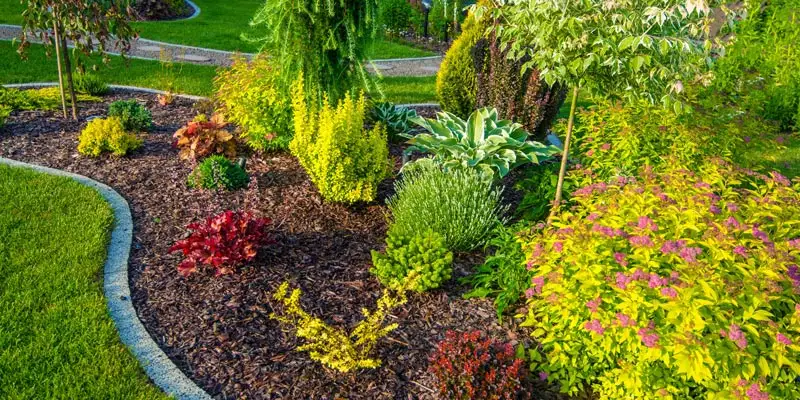An Unbiased View of Landscape Design
Wiki Article
The Facts About Landscape Design Uncovered
Table of ContentsThe Ultimate Guide To Landscape DesignAn Unbiased View of Landscape DesignLandscape Design Fundamentals ExplainedThe Buzz on Landscape DesignWhat Does Landscape Design Do?
Official style theme. Credit Score: Gail Hansen, UF/IFAS The lawn is an expansion of the home where a range of tasks occur. A yard can usually be divided right into three areas: public (the front lawn), private (the backyard), and service (generally the side yard). The area of task locations depends mostly on the type of location, the dimension of room required, the sort of task, and the preferred distance to other tasks and structures.The outdoors wall surface of your home usually works as the very first wall surface or beginning factor of an outdoor area. Incompatible uses must be divided, and relevant activities, such as cooking and dining, ought to be assembled to make the lawn much more reliable and pleasurable. When using hardscape to develop areas, make use of building and construction material comparable to that made use of in your home for continuity from your home right into the garden.
Connected areas. Credit Rating: Gail Hansen, UF/IFAS Making use of similar hardscape functions and repeating plants pulls the eye around the yard. Crucial factors in the process can be emphasized with plantings or features that draw interest and encourage movement in a particular instructions. Moving along the path takes a person from one location to the next and allows the individual to have a variety of experiences.
Some Of Landscape Design

For mental comfort plants are utilized as physical or implied obstacles for personal privacy and security. Physical barriers block both the view and accessibility to a space and consist of fences, walls and plant hedges.
Physical and suggested obstacles. Credit Scores: Gail Hansen, UF/IFAS For these reasons, the sorts of plants to be utilized (such as trees, hedges, or groundcovers) should be picked in the beginning of planning (Landscape Design). Plant types are chosen for their functional capacities to ensure that their future objective and needed space can be considered at the same time

Examine This Report about Landscape Design
Each plant mass is in front of, More about the author behind, or next to, another mass. Credit Report: Gail Hansen, UF/IFAS Repeating plants within a mass and duplicating masses with similar plants links the garden with each other. The individual plant characteristics need to be thought about to efficiently layer and mass plants.All plant compositions start with the main framework plants, the large, mainly evergreen history plants-such as the trees and large bushes. These plants separate or enframe areas, control the size of the room, and give the beginning factor for selecting the proper features of the 2nd layer, midground plants, for massing and infill.
Crucial factors in the yard must be highlighted by the use special plants, unique structures, or yard accessories. Marking thresholds or entrances to areas can be finished with gateways, arbors, and actions, or via the use of distinct and colorful plants. The form and/or style motif of the garden will certainly commonly help identify the crucial factors and just how they need to be highlighted.
Other important areas in the backyard are centerpieces, which is used to aesthetically organize a landscaped location. The kind of focal point typically depends upon the watching viewpoint. Various point of views or perspectives can expose different structures in the landscape that may need a selection of prime focus. Contrasting texture, form, dimension and color will certainly catch and hold the eye.
The Best Guide To Landscape Design

Plant forms. Credit Rating: Gail Hansen, learn the facts here now UF/IFAS After form, texture is the next leading function of a plant; crude, medium and great appearances can be used for comparison and focus in the landscape.
The pleasant fragrance of plants, the sound of wind in the trees, the noise and texture of water, and the shades and appearances of sculptures, pots and garden furniture all contribute to the experience of the yard. One detail that is often ignored is the result of light on the visual appeals of the plants.

Facts About Landscape Design Revealed
It is very important to understand the eventual fully grown size of plants so they can be put in the right place and spaced properly when they are set up. Offering plants space to expand is a challenge due to the fact that the common mature dimension is typically based upon ideal expanding conditions and the ecological problems of a website may cause a plant to grow larger or stay smaller sized.
Report this wiki page